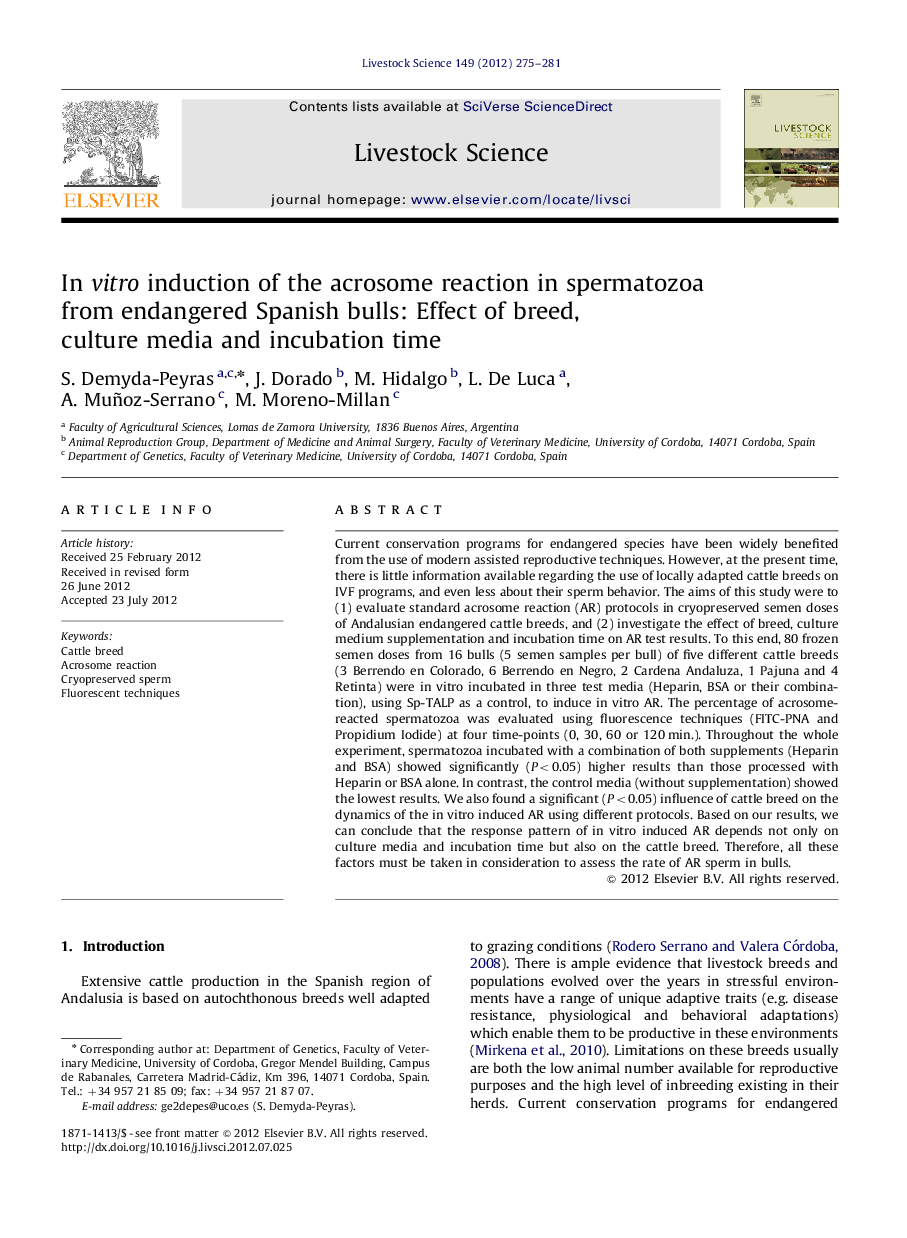| Article ID | Journal | Published Year | Pages | File Type |
|---|---|---|---|---|
| 2447425 | Livestock Science | 2012 | 7 Pages |
Current conservation programs for endangered species have been widely benefited from the use of modern assisted reproductive techniques. However, at the present time, there is little information available regarding the use of locally adapted cattle breeds on IVF programs, and even less about their sperm behavior. The aims of this study were to (1) evaluate standard acrosome reaction (AR) protocols in cryopreserved semen doses of Andalusian endangered cattle breeds, and (2) investigate the effect of breed, culture medium supplementation and incubation time on AR test results. To this end, 80 frozen semen doses from 16 bulls (5 semen samples per bull) of five different cattle breeds (3 Berrendo en Colorado, 6 Berrendo en Negro, 2 Cardena Andaluza, 1 Pajuna and 4 Retinta) were in vitro incubated in three test media (Heparin, BSA or their combination), using Sp-TALP as a control, to induce in vitro AR. The percentage of acrosome-reacted spermatozoa was evaluated using fluorescence techniques (FITC-PNA and Propidium Iodide) at four time-points (0, 30, 60 or 120 min.). Throughout the whole experiment, spermatozoa incubated with a combination of both supplements (Heparin and BSA) showed significantly (P<0.05) higher results than those processed with Heparin or BSA alone. In contrast, the control media (without supplementation) showed the lowest results. We also found a significant (P<0.05) influence of cattle breed on the dynamics of the in vitro induced AR using different protocols. Based on our results, we can conclude that the response pattern of in vitro induced AR depends not only on culture media and incubation time but also on the cattle breed. Therefore, all these factors must be taken in consideration to assess the rate of AR sperm in bulls.
